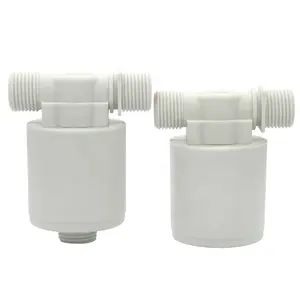Introduction
In an era where precision and efficiency are paramount, liquid level control systems have become indispensable across various industries. These systems, designed to maintain specific fluid levels, employ a range of technologies, including the increasingly popular ball float technology. This article delves into the intricacies of ball float technology, its working principle, advantages, and key considerations for implementation. We will also explore real-world applications through case studies and look ahead to future trends in this dynamic field.
Understanding Liquid Level Control and Its Importance
Liquid level control systems are crucial in various industries, maintaining fluids or fluid-like substances at a specific level. These systems use floats, probes, and other technologies to moderate fluid levels. They can also be used with dry powders, chemicals, or any material that flows. The purpose of these systems is to maintain containers holding liquids at a specific level, filling them when levels are too low or releasing fluid when levels become too high. Understanding the purpose and application of these systems is key to determining the best type and method for liquid level control.
Introduction to Ball Float Technology
Ball float technology is a simple yet effective method for controlling liquid levels. It uses a floating ball that rises and falls with the liquid level, driving a connected rod to open or close the water source. This technology is increasingly being used in various industries due to its efficiency and reliability.
Working Principle of Ball Float Technology
Ball float technology, exemplified by floating ball valves, operates on a simple yet effective principle. These valves float on the water, rising as the water level increases. This upward movement drives a connected rod to rise, which in turn supports a rubber piston pad to close the water source. Conversely, when the water level drops, the floating ball valve descends, causing the rod to lower the piston pad and open the water source. This mechanism ensures efficient and responsive control of liquid levels.
Advantages of Ball Float Technology in Liquid Level Control
Float devices are a popular technology for measuring the level of liquids. They can take two forms: a float on an arm operating a simple potentiometer to create an output, or a float or a series of floats sliding vertically on a rod, inside of which is a string of reed switches providing liquid level signal outputs. Float sensors have their place in simple applications and are a mature technology for unsophisticated measurement of liquid levels.
Key Considerations When Implementing Ball Float Technology
When implementing ball float technology, it's crucial to consider the application's requirements. Float valves are versatile, found in applications where drinking water must be protected against backsiphonage. They are also used in tank filling, rainwater harvesting systems, irrigation systems, and water treatment plants. The float valves are not controlled electronically but by the buoyancy force, which means they are reliable even during power failures. They are also maintenance-free, making them cost-effective in the long run. However, the specific requirements of your application may necessitate a custom solution, which can be provided by various manufacturers.
Case Studies: Ball Float Technology in Action
Stainless steel float balls have found extensive use in industries like food processing, chemical production, and vacuum truck operations. In food processing, they help monitor liquid levels in containers holding acidic or alkaline ingredients, ensuring optimal flotation and no reaction with the substance. In chemical treatment systems, they are integral for safety and maintaining correct viscosity and composition of chemicals. For vacuum trucks, these float balls act as a stop function, indicating when the tank is full, preventing overflow. These case studies highlight the versatility and effectiveness of ball float technology in action.
Future Trends in Ball Float Technology
Bidirectional cryogenic floating ball valves are transforming cryogenic system designs. These valves, unlike traditional unidirectional valves, offer bidirectional sealing, making them ideal for applications requiring sealing in both directions. They are smaller, lighter, and more cost-effective, with a simpler and smaller actuator. This new technology has been successfully implemented in recent years, proving to have a positive impact on project costs and the reliable long-term operation of systems. This innovation is particularly beneficial for Small-Scale LNG system designs, significantly reducing system size, weight, complexity, and cost.
Conclusion
Ball float technology has proven to be a reliable and efficient solution for liquid level control, offering a blend of simplicity and sophistication. Its versatility is evident in its wide range of applications, from food processing to chemical production and beyond. The advent of bidirectional cryogenic floating ball valves signals a promising future for this technology, with potential for significant cost and operational efficiencies. As we continue to innovate and adapt, ball float technology will undoubtedly play a pivotal role in shaping the future of liquid level control systems.










































 浙公网安备 33010002000092号
浙公网安备 33010002000092号 浙B2-20120091-4
浙B2-20120091-4